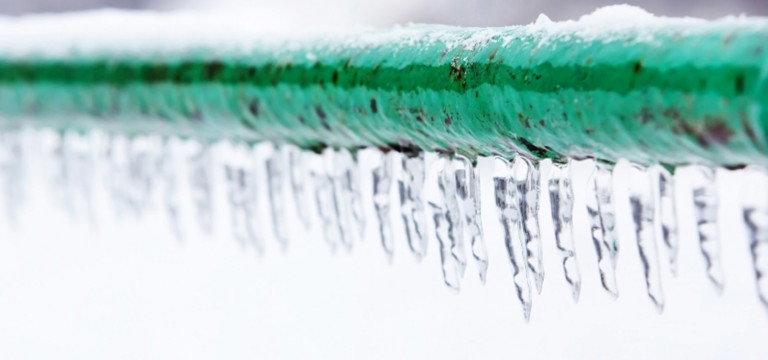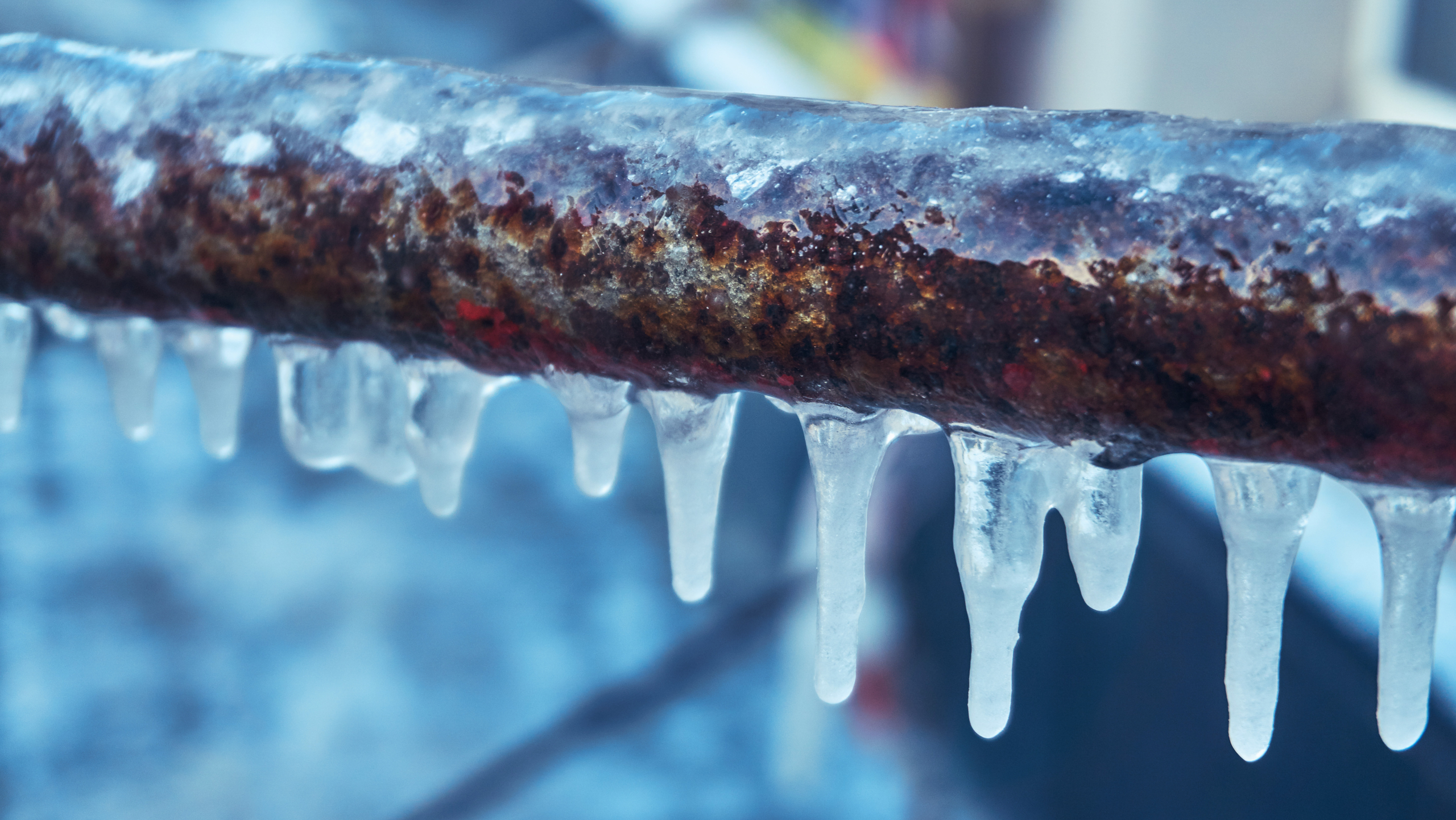Preventing Frozen & Burst Pipes: Everything Commercial Property Owners Need to Know
In the age of bomb cyclones and polar vortexes, extreme winter weather cannot be ignored. Cold North American winters bring many threats to the forefront for commercial property owners, including the risk of water damage from frozen and burst pipes.
Burst pipes can cause major damage to commercial properties including apartment buildings and hotels, in addition to putting tenants and their belongings in danger. Proper planning, precautionary steps, and knowing the signs of frozen pipes can make all the difference in avoiding and reducing damage before, during, and after a winter storm.
When to worry about frozen pipes
Temperatures at or below 20˚ Fahrenheit are considered threatening to pipes. When the temperature drops to this level, it can cause any water left sitting in pipes to freeze. As the water freezes, it can cause a pressure increase that ruptures—or “bursts”—metal and plastic piping, resulting in extensive amounts of water flooding into walls, ceilings, and interiors. When this happens, the damage can be significant, costly, and challenging to clean up.
Winter weather is unpredictable, so it’s good to always be prepared for freezing temperatures and the threat of frozen and burst pipes. The Texas deep freeze of February 2021 is proof that it pays to be prepared, even in regions accustomed to more mild winter temperatures.
The highest-risk pipes are those exposed to cold in uninsulated or unheated areas, including outdoor water sources and supply lines, as well as pipes located in basements, attics, or along exterior walls. However, any system that has water running through it can be affected, including all sinks and faucets, radiating heat, toilet tanks, and more.
Risk factor recap:
- Temperatures at or below 20˚ Fahrenheit
- Uninsulated or exposed pipes
- Pipes located in unheated or outdoor areas
- Basements, attics, and pipes along exterior walls
Preventing frozen pipes
Taking precautionary steps to prevent frozen pipes before winter storms and freezing temperatures hit the forecast is the greatest strategy for a successful, damage-free winter season.
Start by inspecting the property and water-carrying systems for risk factors. Walk the property—preferably with a trained restoration professional who knows what to look out for—and keep an eye out for any exposed, poorly insulated pipes that may be at risk of freezing.
Make sure all employees, including janitorial, security, and engineering staff know how to access water shutoff points, and consider whether tenants or renters should be aware too. Be equipped with emergency supplies like flashlights, bottled water, and other standard items that might be necessary during a winter storm scenario.
Preventative measures can help reduce the risk of freezing and burst pipes. As cold weather approaches, be sure to take the following steps to protect your property.
Steps to prevent pipes freezing:
- Add insulation: Take care to properly insulate all vulnerable pipes in areas at risk of dropping below freezing. Most hardware stores and online retailers offer a range of pipe wrap insulation materials for this purpose, including foam, fiberglass, and rubber varieties.
- Seal any gaps: Be sure to seal all openings and gaps in your property that could allow cold air to get inside. Pay particular attention to openings near pipes and water sources.
- Open doors: Opening doors and cabinets where pipes are located can allow heated air to travel more freely, keeping pipes warm. Keeping doors ajar between heated and unheated rooms can also help reduce the risk of freezing.
- Let faucets drip: Even a tiny trickle from the tap can reduce the risk of burst pipes by preventing water from sitting—and freezing—in pipes. Maintain a slight water flow in any low-use sinks and other faucets in your property, and remind tenants and guests to do the same in units.
- Keep the heat on: Even when the property will be vacant for any length of time, it’s essential to keep the heat at a minimum of 55˚ Fahrenheit to protect pipes from freezing. If the forecast calls for extreme cold, consider raising the heat a bit above normal settings as an added precaution.
Signs a pipe has frozen
Knowing the signs can help you catch frozen pipes before they burst and cause damage to your property. As soon as an issue is suspected, it’s essential to jump into action to warm pipes and reduce risk of water damage. Make sure all property tenants and renters are informed of what to look out for, and that they know who to call if they notice any suspicious signs.
Frozen pipe warning signs:
- Low-to-no water from faucet
- Visible ice and frost on or around pipes
- Bad odor from blocked drains
If a frozen pipe is located, reduce the likelihood of it bursting by turning off the water to the building and the main water shut-off valve. Turn up the thermostat and add extra insulation to help thaw the pipes. Be sure to closely inspect the pipe for signs of cracking and take caution before turning the water back on.

What to do if a pipe bursts
Even the best-laid plans sometimes fail, and the high frequency of winter water damage claims due to frozen pipes is a testament to that. If a pipe bursts in your building, don’t panic. Take immediate action to stop the water and mitigate further damage.
Safety comes first. Turn off the power and unplug nearby electrical cords before doing anything else. Next, immediately close the water shut-off valve to stop the flow and slow the damage. Extensive water damage can be difficult to clean up, particularly in winter weather, so it’s best to reach out to an experienced restoration professional to assess the situation and mitigate the damage as much as possible.
More winter readiness tips
At First Onsite, our team of experienced professionals is here to help you prepare your commercial property to face the worst of cold weather. Be sure to check out more of our winter storm preparation advice for everything you need to know about keeping your commercial property safe and secure this winter.
